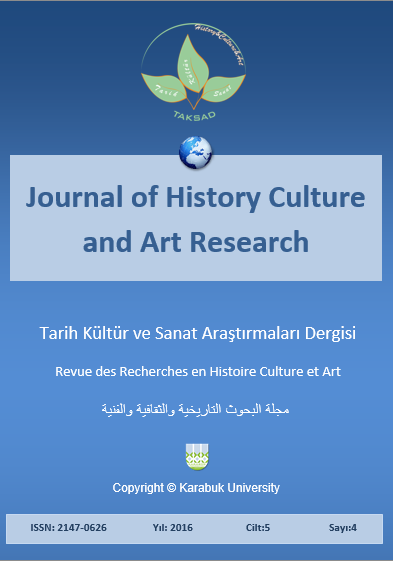Comparison of Resistance Symbols in Poems of Kaiser Aminpoor and Ayyed Hassan Hosseini with Poems of Ali Ahmad Sa'id and Jabra Ibrahim Jabra (Adonis)
DOI:
https://doi.org/10.7596/taksad.v5i4.610Keywords:
Comparative Analysis, Resistance Literature, Arab Poets, Historical and Mythological, Ibrahim Jabra, Adonis, Aminpoor.Abstract
The resistance poets provide exquisite images of natural phenomena, personalities, and religious, historical, mythological, epic and national events. Selection and usage of these images as symbols of resistance in the poems depict the mood of fight as well as the other concepts to the reader. By implementing a comparative study on the resistance symbols in the poems discussed in this study. This article shows that natural symbols have high frequency and the similarity of the symbols in each of four categories (natural, religious, historical, epic and other symbols) are very low because of differences in ideas. Examining the content of the heavily used symbols by Arab poets suggest that they discourse to consciousness of the Arab nation. However, in the case of Iranian poets, they try to strengthen the spirit of struggle and resistance against a hostile force. The most important feature of the symbols of Arab poets is the use of self-made and private symbols to a very high extent, and this can be seen in the poets in Iran very low. Arab poets, in orientation to the West, have used in a large amount of mythological symbols outside their territory, especially Greece and Egypt that don’t appear in Iranian poets.
References
Almadar (1981). Jabra Ibrahim Jabra. Beirut: Arab Association for Studies and Publishing.
Aminpoor, A. (2012). The Full Set of Lyrics. Tehran: Pearl.
Daralaudah (1971). Divan Leaves in the Wind. Beirut: Adonis.
Daralaudah (1971). Divan Music Mahyar Damascene. Beirut: Adonis.
Fazaeili, S. (1999). Culture Symbols: Jean Chevalier and Alan Gerber. Translation. Tehran: Oxus.
Fazli, M. (2014). Evaluation of Symbols on Jabra Ibrahim Jabra Poems. Graduate Thesis, Language and Literature, University of Yazd, Supervised by Mohammed Mehdi Semati. Summer.
Jabra, J. (1981). Tammuz in the City: Jabra. Beirut: Arab Association for Studies and Publishing.
Kabir, M. A. (2007). Persian Culture. Tehran.
Seyedi, H. (2007). Symbolism in the Poetry of Adonis. Journal of the Faculty of Foreign Languages. Isfahan University. No. 1. Winter 2007. pp. 75-50.
Yahaghi, M. J. (2007). Culture. Mythology and Story Schema in Persian Literature: Tehran, Contemporary Culture.
Zandi, Yazdi, G. H. (2013). The Attitude of the Intellectual and Literary of Adonis. PHD. Thesis. Arabic Language and Literature, Islamic Azad University, Science and Research, Summer.
Downloads
Published
How to Cite
Issue
Section
License
All papers licensed under Creative Commons 4.0 CC-BY.- Share — copy and redistribute the material in any medium or format
- Adapt — remix, transform, and build upon the material for any purpose, even commercially.
Under the following terms:
Attribution — You must give appropriate credit, provide a link to the license, and indicate if changes were made. You may do so in any reasonable manner, but not in any way that suggests the licensor endorses you or your use.
- No additional restrictions — You may not apply legal terms or technological measures that legally restrict others from doing anything the license permits.







